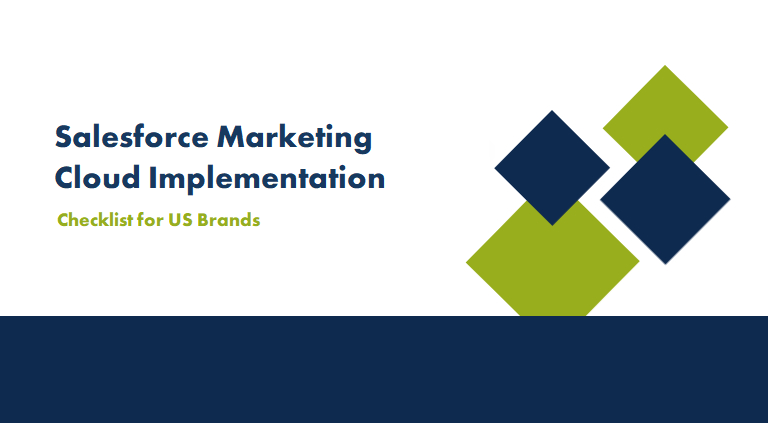Salesforce Marketing Cloud implementation is the process of configuring and setting up the Salesforce Marketing Cloud platform to meet a company’s specific marketing goals. It transcends the traditional fragmented marketing system that created common data silos, resulting in inconsistent experiences, operational inefficiencies, fragmented customer views, and inaccurate analysis. The Salesforce Marketing Cloud implementation is one of the most transformative tools for any US brand to maximise customer engagement seamlessly. However, many businesses struggle to adapt to Salesforce cloud implementations, which is why they require a proper implementation checklist.
So, let’s take notes, because we will walk you through creating a checklist to implement your marketing cloud platform.
Planning Before Implementation
The first step before execution is to plan the goal your brand wants to achieve. It is about better customer engagement, higher email open rates, or elevated sales. Define your audience so that interacting with them becomes easier as a brand. Have a clear idea of which marketing channels you’ll focus on to hit the right audience. To implement all this, you need a Salesforce implementation team comprising Salesforce admins, content creators, marketing strategists, and others.
Set Up a Salesforce Marketing Cloud
Create a team to plan, build, coordinate, and test your platform before executing the rest of your marketing team. If you are looking for hands-on help with Marketing Cloud, the best solution is to hire Salesforce Marketing Cloud services to achieve the best outcome, from setting up the platform’s technical infrastructure to handling creative marketing.
Email and Journey Builder Configuration
The Email Studio of Salesforce Marketing Cloud helps to create responsive email templates. It enables communicating with contacts via email by choosing drag-and-drop templates for quick campaigns and custom-coded templates for more advanced designs. You can also create automated customer journeys by using Journey Builder. For example, if a user makes a purchase, it sends a thank you message; if a customer signs up for a newsletter, it sends a welcome email. This automated flow keeps your customer engagement in pace without manual efforts.
Content Strategy and Personalisation
The Salesforce Marketing Cloud allows your brand to display different email messages to various customer groups using dynamic content. It segments your audience based on their behaviour, purchase history, preferences, etc. Moreover, the A/B tests emails to gauge what’s working best, whether it’s the CTAs, images, or subject lines that make customers feel as if you are directly conversing with them.
Testing and Quality Assurance
The AB testing before the campaign launch is a staple. Checking whether the personalisation tags work properly, whether emails display correctly on desktop and mobile, and the functionality of the links and CTAs, and running test campaigns with the internal team before hitting the send button for the emails, helps avoid mistakes, if any.
Analytics, reporting, and Optimisation
Salesforce Marketing Cloud has built-in analytics. It enables you to check the performance of your marketing campaigns. You can check the email performance, customer journey performance, and conversion tracking. Reviewing these insights helps enhance your marketing strategy.
On a last Note
Do not set and forget the Salesforce campaign. It needs constant monitoring to maintain accuracy. Stay updated on Salesforce Marketing Cloud feature releases to avoid missing new capabilities. Also, to avoid all these steps and hassle, consider working worth the Salesforce consultant in USA to ensure a smooth, compliant, and ROI-driven implementation.
 :
https://nsiqinfotech.com/
:
https://nsiqinfotech.com/

